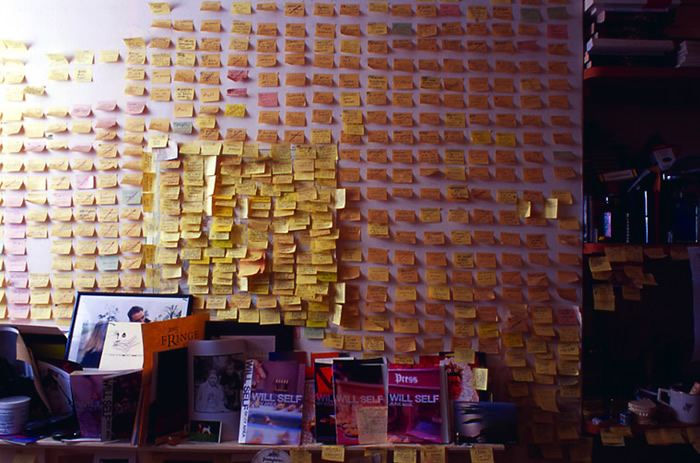25 July: Urban Psychosis, An evening with Will Self, Manchester.
12 August: Edinburgh Book Festival, 8pm, Charlotte Square Gardens, Charlotte Square, Edinburgh, EH2 4DR.
9 September: City Books, 7pm, Ropetackle Arts Centre, Little High Street, Shoreham-by-Sea BN43 5EG. Tickets £8 available from Ropetackle or City Books.
10 September: Topping and Company Booksellers, The Paragon, Bath, Somerset BA1 5LS.
11 September: LRB bookshop, 7pm.
16 September: Desert Island Flicks, Arnolfini, Bristol.
17-19 September: Annual Conference and Social Housing Exhibition, ICC, Birmingham.
22 September: 5×15 at the Tabernacle, Notting Hill, London. Sold out.
23 September: Wakefield Lit Fest, 7.30pm, Unity Hall, Wakefield.
26 September: Shakespeare & Co, Paris.
30 September: In conversation with Mark Wallinger about Labyrinth at the LRB bookshop, 7pm.
2 October: Words in Walden Festival, 7.30pm, Friends’ School Hall, Mount Pleasant Road, Saffron Walden, CB11 3EB.
3 October: Cheltenham Festival, Shark event.
4 October: Cheltenham Festival, National Conversation Event organised by Norwich Writer’s Centre.
7 October: The State We’re In, Brunel University, 5pm-6pm.
9 October: Ilkley Literature Festival, Kings Hall in Ilkley.
11 October: Havant Literary Festival, 8pm, The Spring Arts & Heritage Centre, East Street, Havant, Hampshire, PO9 1BS.
14 October: Archway With Words.
16 October: The Playhouse Theatre, Norwich.
17 October: The Regal Cinema Evesham.
18 October: Nottingham Lit Fest.
21 October: Plymouth International Book Festival, 8pm, Roland Levinsky Building, Plymouth University.
25 October: Manchester Literature Festival Writer’s Conference, keynote speech in the morning followed by an “in conversation with…” in the afternoon.
4 November: 5×15, Conway Hall.
12 November: Intelligence Squared debate on psychiatry, the pharmaceutical industry and mental disorders, Royal Geographical Society, 7pm.
13 November: Bristol Grammar School, 7pm, Great Hall, Bristol Grammar School, University Road, Bristol BS8 1SR.
14 November: Literary Leicester, 6pm.
21 November: Being Human Festival, Aberdeen.
25 November: Granta event\ at Notting Hill Community Church, Kensington Park Rd, London W11 2ES with Iain Sinclair discussing JG Ballard, 7pm.
29 November: Big Gothic Debate, 4pm-7pm, Lutyens Crypt, Metropolitan Cathedral of Christ the King, Leggat theatre, Liverpool University.
3 December: 6pm, University of London Institute, Paris.
